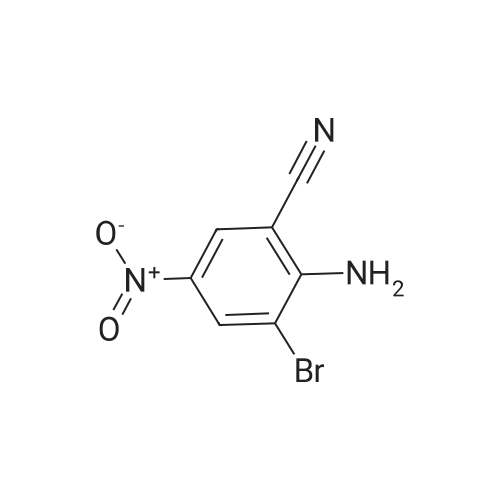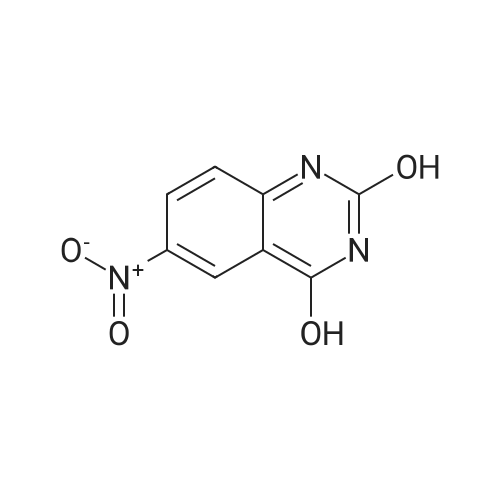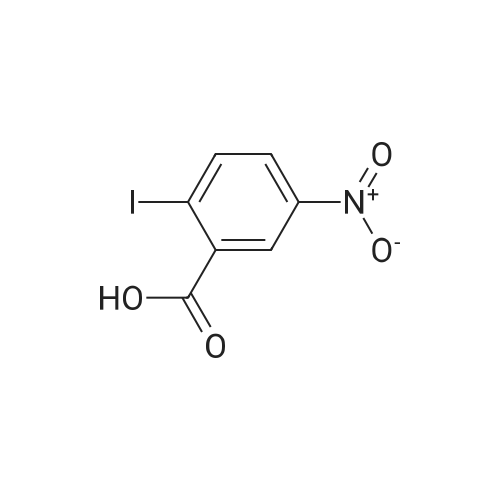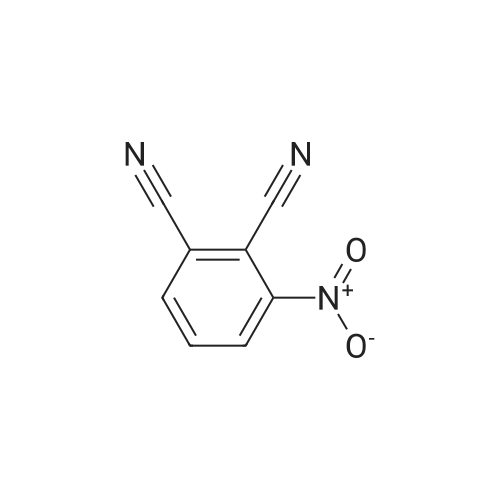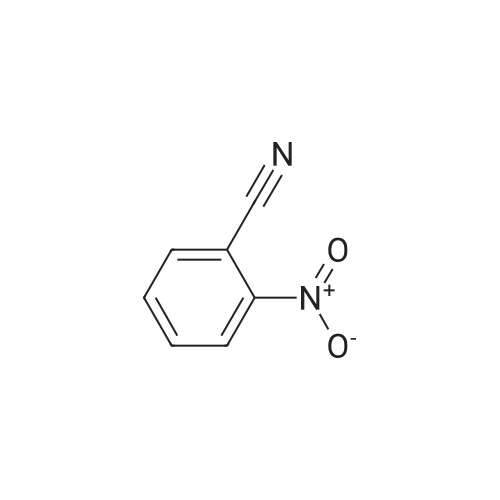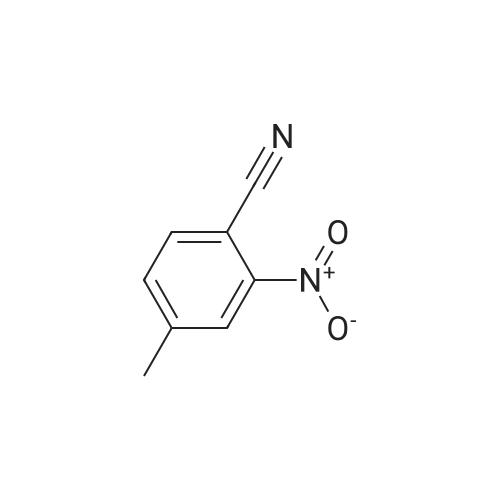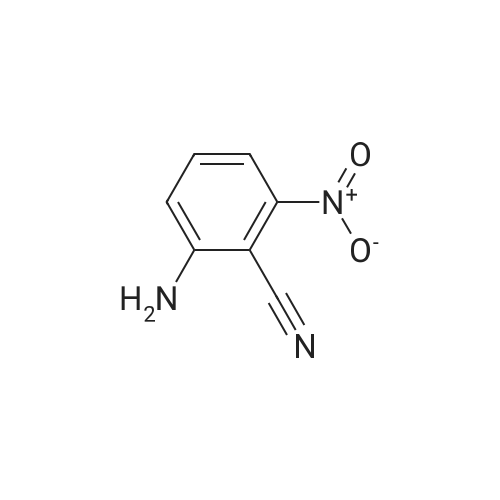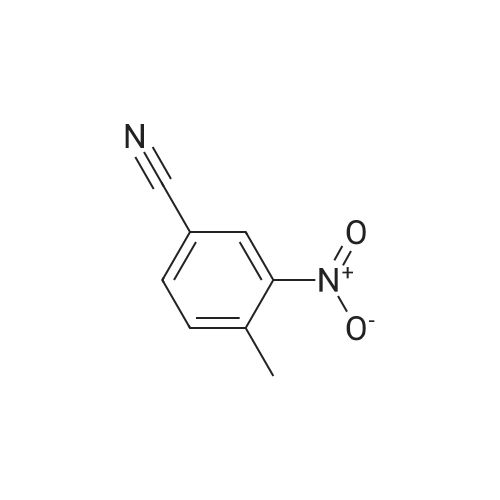|
1,8-diazabicyclo[5.4.0]undec-7-ene; In tetrahydrofuran; under 760.051 Torr; |
SynthesisPeptidomimetics 37-44 were synthesized via solid phase peptide synthesis, using Suzuki couplings employing various boronic acids and aryl bromides. Intermediates display hydrophobic substituents from the aromatic spacer (Abz). The simple quinazoline scaffolds derived from commercially available starting materials. The synthesis of the quinazolines cores 45a-b was accomplished by the cyclization of 4-nitroanthranilic acid by the reaction with sodium isocyanate or cyclization employing a carbon dioxide atmosphere with catalytic DBU (1 ,8-diazabicyclo[5.4.0]undec-7-ene) from 4- and 5-nitro precursors respectively Figure 10. Alkylation was followed by reduction of the nitro group followed by coupling with A- nitrobenzoyl chloride via anilide formation to provide 48a-b. Reduction to the aniline, coupling with AcArg(Pmc)-OH, and deprotection of the guanidine protecting group afforded 50a-b.A convergent synthesis using methyl-4-amino-2-bromobenzoate or methyl-4-aminobenzoate and 4-nitroaniline created non-peptidic inhibitors 56aa-ci, as seen in Figure 13. Suzuki coupling of the bromoaniline with the corresponding boronic acid, employing PdCI2(dppf) as a catalyst, created compounds 51a followed by reductive amination utilizing N-Boc- aminoacetaldehyde produced compounds 52a-c. A series of deprotections followed by guanidinylation of the resulting amine afforded the N-terminal portions of the inhibitor 53a-c. The C-terminal hydrophobic portion of the molecule was synthesized via alkylation of A- nitroaniline with the corresponding bromide and subsequent reduction of the nitro group utilizing tin (II) chloride, producing compounds 55a-i. Coupling of compounds 53a-c and 55a- i followed by Boc deprotection under acidic conditions produced inhibitors 56aa-ci. Inhibitors64a-b were derived from a similar synthesis, but in place of the reductive amination step, 48c was reacted with Boc-Gly-OH to provide the amide intermediate compound 62 which was manipulated in a similar manner to provide inhibitors 64a-b, seen in Figure 16.The synthesis of inhibitors 57aa-fa was designed to employ a late stage Suzuki coupling to provide faster access to a number of derivatives at the R1 position, while keeping R2 as a <n="13"/>benzyl substituent, see Figure 15. Commercially available methyl-4-amino-3-bromobenzoate was saponified under basic conditions followed by amide bond formation with compound 55a to provide compound 59a. This intermediate was then reacted with different boronic acid derivatives PdCI2(dppf) as a catalyst to provide 60aa-fa. A series of functional group transformations provided inhibitors 57aa-fa. The indole scaffold was readily derived from commercially available 4-iodoaniline and Boc- GIy-OH, which were reacted to form iodo-amide compound 65, seen in Figure 17. Sonagashira cross-coupling of compound 65 and ethynyl-trimethyl-silane (TMS-acetylene) followed by removal of the silyl protecting group afforded terminal alkyne compound 66. A consecutive Sonagashira cross-coupling with 2-iodo-4-nitroaniline followed by cycloisomerization employing catalytic copper (II) acetate41 afforded indole scaffold compound 68. Reduction of the nitro to the amine followed by alkylation with the cooresponding bromide provided compound 70a-b. A series of functional group transformations, similar to the reactions depicted in Figures 10 and 13, provided inhibitors 71a-b. It is also to be understood that the following claims are intended to cover all of the generic and specific features of the invention herein described, and all statements of the scope of the invention which, as a matter of language, might be said to fall therebetween. Now that the invention has been described, |

 Chemistry
Chemistry
 Pharmaceutical Intermediates
Pharmaceutical Intermediates
 Inhibitors/Agonists
Inhibitors/Agonists
 Material Science
Material Science













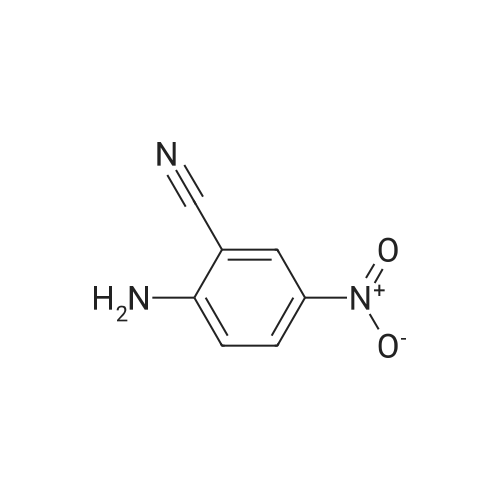

 For Research Only
For Research Only
 120K+ Compounds
120K+ Compounds
 Competitive Price
Competitive Price
 1-2 Day Shipping
1-2 Day Shipping






